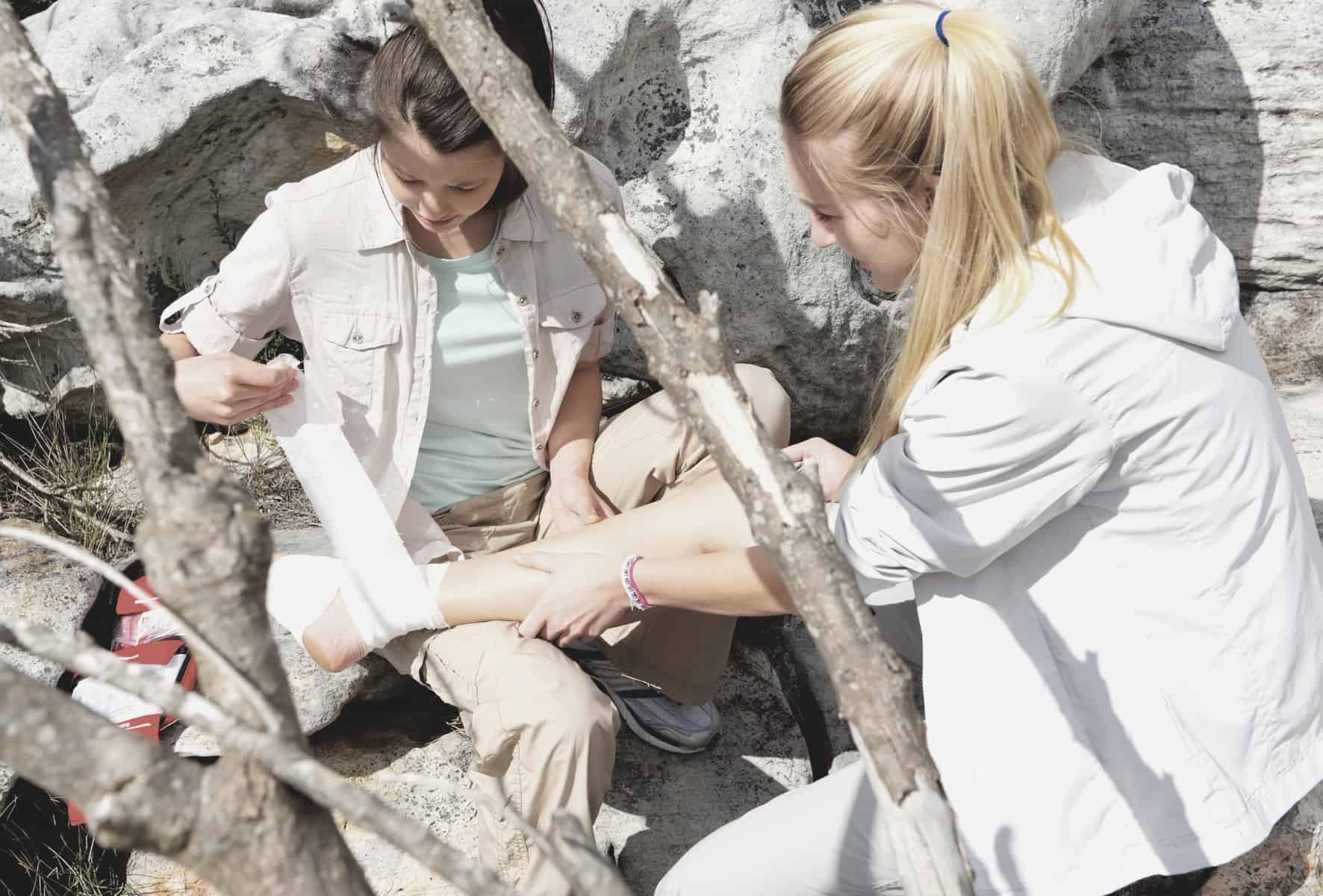On the fourth day of a 50 miler, the group was interrupted by a boy loudly complaining about intense pain in his stomach. The adult leader, assuming appendicitis, frantically hiked eight miles to the nearest ranger station and arranged for a helicopter evacuation. When the boy finally arrived at the hospital emergency room, a quick examination by doctors revealed the problem and he was given laxatives to solve it. Unfortunately, the rest of the backpacking trip was canceled and everyone had to go home.
Wilderness Medical Emergencies
Hike leaders need to be vigilant about the health of everyone in their group. Part of this vigilance is spending time with hikers and getting to know their physical strengths and weaknesses before you take them on a 50-mile backpacking adventure. A part of this knowledge will come from a review of their medical forms. Most of it, however, will emerge during the practice hikes and during discussions with the hikers and their parents. (The best time to get answers to medical questions is before you leave home.)

Even with the most comprehensive preparation, however, participants can have all kinds of medical problems on backpacking trips. Sometimes, leaders know immediately what is wrong and can act appropriately. Often, however, the exact nature of the medical problem is unclear. When this happens, leaders all-too-often fail to ask the right questions and jump to the wrong conclusions. This can lead to big mistakes in treatment.
Sometimes a hiker (especially a young hiker) finds it difficult to talk about his physical problems, either because he is embarrassed, feels guilty about slowing down the group, or because he really doesn’t know what is wrong. In some extreme situations, hikers might be unconscious and unable to tell you anything at all.
When confronted with an Emergency, Remember to SAMPLE
When confronted with a confusing or troublesome medical problem, leaders can go through this S.A.M.P.L.E. checklist with the “patient” to get some clues about what is really happening (Symptoms, Allergies, Medications, Past Medical History, Last Ins and Outs, Events Leading Up To This). This questioning checklist is a logical way to make sure you have covered all the important areas as you try and work out what is wrong.

Symptoms: What are they complaining about? Is there pain in a specific part of their body? Do they have any physical problems like weakness, fever, vomiting, chest pains, stomachache, or difficulty breathing? How long has it been going on?
Allergies: Do they have allergies to food, pollen, or anything else? How severe are the allergies? What are the symptoms when they have an allergic reaction? What instructions do you have for dealing with them? Do they carry medications: Epinephrine, Benadryl, Claritin, over the counter treatments, etc.
Medications: What is the condition for which they are taking medication? Where is their inhaler, nitroglycerin, Ritalin, or other prescriptions? Did they miss their daily dosage or take too much? What happens if they don’t take their medications as prescribed? What are the side effects?
Past Medical History: What medical issues have they had in the past: surgeries, broken arms, ankle sprains, back pain, heart attacks, diabetes, knee problems, asthma attacks, severe blisters, dehydration, or mental problems? How long ago or how severe was the problem?
Last Ins and Outs: What was the last thing they had to eat or drink? Have they consumed enough calories to fuel their body adequately for the hiking conditions? What is the weather and are they drinking enough water (or Gatorade) to keep them hydrated? Are they sweating profusely or not at all? When was the last time they went to the bathroom? How often are they going? Is their urine clear and copious? Do they have diarrhea or constipation? For how many hours or days has this situation existed?
Events Leading Up To This: Why do you think this happened? Has this ever happened before? What were you doing just before you started feeling bad and is there any connection? Does anything else hurt?
………….
The next time you have a Scout with a problem on an outing, set them down on a rock, ask the right questions, take the time necessary to get all the information, then deal with the situation properly.
This checklist is taught in many Wilderness First Aid Classes. Have you taken the course? (Pretty important for at least one leader in your group to get this kind of training.) Thousands of people in California and Nevada, including Scout leaders, have taken Wilderness First Aid Courses taught by Bobbie Foster.
Foster Calm Wilderness First Aid Training: http://www.fostercalm.com
Wilderness First Aid Training by Bobbie Foster
Check out our buyer’s guides to various health & survival products:
- What is the best backpacking hatchet?
- Which is the best multi-tool for backpacking?
- Who makes the best folding saw for camping?
- Which brand makes the best towel for backpacking?
- Never hit the trail without a choosing from our selection of wind resistant lighters.
- Great camping chargers can help keep you powered all trip long.
- Always stay on step ahead of the weather conditions with a camping thermometer.
- We’ve done the testing to decide which is the best flashlight for camping in 2024


Talk about putting 20 gallons of wisdom into a one-ounce jar! Good packing! And a good start! I have taught Wilderness First Aid for over 15 years now, very many of those students were scouts heading off to high-adventure treks. Knowing the skills and how to set fractures and stopping bleeding and recognizing sudden illnesses are all very important, but as you point out, finding out what is REALLY wrong is where the secret of success begins. Simple infections, if not cared for, can become debilitating and fatal. Hysteria can lead to the incident you described. Sadly, there are very few of us still willing to teach this intense, time-consuming course. But it’s worth every minute and every word you read! Safe travels!
Excellent review